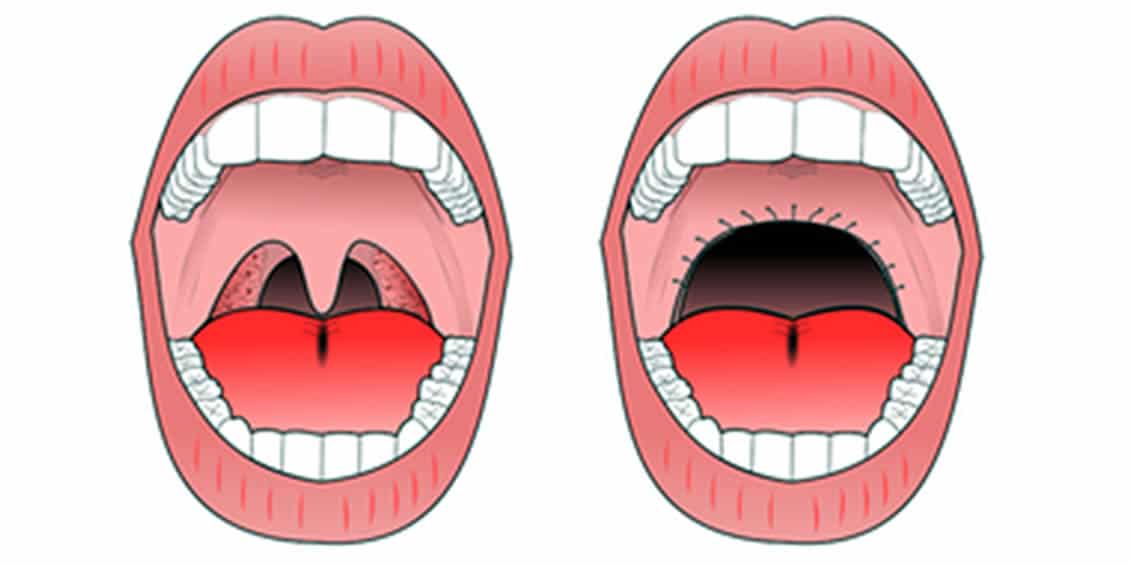Uvulopalatopharyngoplasty in Nassau County & Long Island, NY
UPP Treatment for Sleep Apnea in Great Neck & Manhattan

Uvulopalatopharyngoplasty, or UPPP, is a surgical procedure that treats sleep apnea by removing excess tissue in the throat and, as a result, widens the airway. This allows air to move through the throat more easily when patient breathes, effectively reducing the symptoms of snoring and sleep apnea.
Who are the Ideal Candidates for a Uvulopalatopharyngoplasty?
UPPP is recommended for patients with the following conditions:
- Excess tissue in the nose, mouth or throat that blocks the airways and causes breathing abnormalities
- Those for whom lifestyle changes and conservative treatments have failed
- Those who are unable to tolerate the CPAP, or Continuous Positive Airway Pressure treatment
In addition to widening the airway, UPPP also aims to improve the movement of air past the soft palate and help the airway remain open during sleep.
How is a Uvulopalatopharyngoplasty Procedure Performed?
The UPPP procedure is performed in a hospital and requires general anesthesia and an overnight stay. During the UPPP procedure, tissue may be removed in order to expand the airway. Tissue may be removed from the following areas:
- Uvula, or the finger-shaped tissue that hangs downward from the roof of the mouth into the throat
- Soft palate, or the rear portion of the roof of the mouth
- Throat
- Tonsils
The amount of tissue removed will depend upon the location and severity of each patient’s individual condition. If an enlarged tongue is a factor in the patient’s sleep apnea, the doctor may also remove a small portion of the tongue, which is called a uvulopalatopharyngoglossoplasty.
The surgeon may use either a scalpel or newer laser methods such as LAUP, or Laser-Assisted Uvulopalatoplasty, in order to perform the UPPP.
Recovery usually takes about ten to 14 days, during which time patients may experience difficulty swallowing and/or sore throat. After the procedure, a sleep study may be required to determine if sleep apnea has improved.
Are There Risks to a UPPP Procedure?
While this procedure is considered safe, it is not recommended as an initial treatment, and is used more as a last resort. Patients should consider non-surgical treatments before choosing surgery.
UPPP has been found to alleviate snoring in many patients who have had this surgery, but results with sleep apnea vary from patient to patient.
Like any other surgical procedure, there are certain risks associated with the UPPP procedure, that may include:
- Swelling
- Infection
- Pain
- Difficulty swallowing
- Bleeding
- Speech problems, or change to a more nasal quality of speech
- Changes in food taste
While the procedure may be successful, the patient may still require the use of CPAP treatment. Dr. Setzen will discuss these risks as well as address any concerns prior to the procedure.
Patient Testimonials
What People Say About Us!
- “Highly recommend Dr. Setzen! I had a badly deviated septum for the past 10 years after a sports injury, leading to many breathing issues and chronic nasal congestion. He was able to correct all of my issues and correct the outside appearance of my nose as it was crooked from the injury. I’m extremely happy with the results. 10/10 recommend!” – K.H.
- “There is no one better than Dr. Setzen. He answered any and every single question prior to my surgery and took such amazing care of me. He knew how anxious I was about the surgery and he and his team put me at ease. Everything he explained to me pre surgery was exactly what happened post surgery.” – N.K.
- “Dr. Setzen is a fantastic ENT. He takes your concerns and symptoms seriously and is very friendly. I had some pain in my neck recently and all in 10 minutes, he scoped my nose and throat and found acid reflux and a deviated septum were the culprits. He took my tonsils out when I was 7 (I’m 30 now) and I’ve been strep throat free ever since. Highly recommended” – S.C.
Click here to read more reviews.
Schedule Your Consultation Today!
Interested in learning more about Uvulopalatopharyngoplasty as a treatment option for sleep apnea? Call 516-829-0045 to schedule your consultation with Dr. Michael Setzen today! Our practice serves Great Neck in Long Island & Manhattan in NYC!




